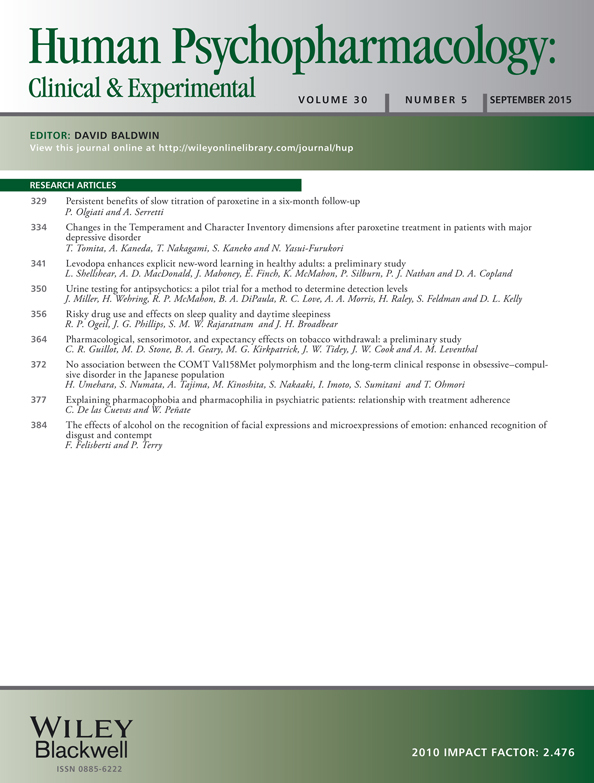Pharmacological, sensorimotor, and expectancy effects on tobacco withdrawal: a preliminary study
Abstract
Objective
Research designs for parsing the mechanisms underlying tobacco withdrawal are scant. This study introduced a novel research design that simultaneously manipulated three tobacco withdrawal mechanisms: pharmacological (nicotine dissipation), sensorimotor (elimination of the smoking ritual), and expectancy (activation of beliefs regarding the effects of nicotine deprivation), permitting examination of the effects of each mechanism while holding the other two mechanisms constant.
Methods
Following overnight abstinence, 32 regular cigarette smokers were randomized in a 2 (expectancy: told patch contains nicotine versus told placebo patch) × 2 (drug: receive 21-mg transdermal nicotine patch versus receive placebo patch) × 2 (sensorimotor: smoke very low nicotine content cigarettes versus no smoking) full factorial between-subjects design. Participants repeatedly completed measures of craving, affect, and anticipated pleasure from and desire for rewarding experiences, followed by a smoking lapse analog task.
Results
Receiving nicotine (versus placebo) increased positive affect and anticipated pleasure from and desire for reward. Expecting nicotine (versus placebo) reduced negative affect and increased smoking delay. Sensorimotor stimulation from smoking (versus no smoking) reduced smoking urge and behavior.
Conclusion
Results provided initial validation of this novel three-mechanism design. This design can be used in the future to advance understanding and treatment of tobacco withdrawal. Copyright © 2015 John Wiley & Sons, Ltd.




